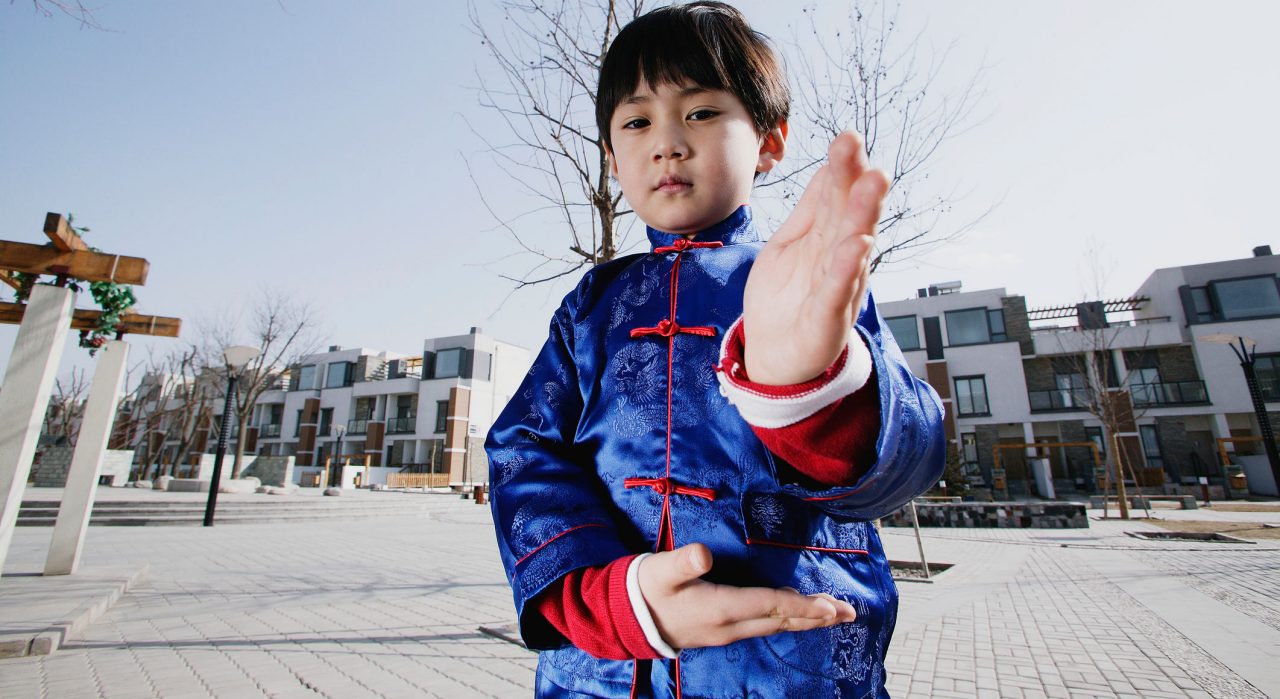Teaching Kids Martial Arts

Teaching children martial arts is far more than showing them how to break a board.
One thing you will notice almost immediately if you have your child enrolled in martial arts is the multi-dimensional properties.
Yes, you can watch your child learn to break a board or flip someone on their back; self-defense is an important part of the practice.
YOU MIGHT ALSO LIKE: Exercises and Children
There also is real potential for self-respect, self-control, self-esteem, focus, confidence, and courtesy, writes black belt Stacey Nemour.
“As an additional benefit, the child will also excel in other athletic endeavors,” Nemour says. “Martial arts training gives your son or daughter the chance to strengthen in mind as well as body. It encompasses not just the physical aspect of the `sport,’ but mental and emotional lessons as well.”
In comparison, Nemours adds, other youth activities and sports include fierce competitiveness and a “winning at all costs” mentality that creates issues with self-esteem and misplaced aggression.
“The martial arts are ultimately self-knowledge. A punch or a kick is not to knock the hell out of the guy in front, but to knock the hell out of your ego, your fear, or your hang-ups,” martial arts icon Bruce Lee once said.
Not coincidentally, parents whose children have attention-deficit hyperactivity disorder (ADHD) often say teaching them martial arts helps because self-control and concentration are lacking in some kids with ADHD.
There are many styles, none necessarily more suited to your child than another. They include karate (Japanese), Taedwondo (Korean), Judo (Japanese), Jujitsu (Japanese), Aikido (Japanese), Kung Fu (Chinese), and Tai Chi (Chinese).
Each has its own tenets and style, some more aggressive than others. Karate and Aikido, for instance, are both Japanese but take a different approach. Karate emphasizes quick, sharp actions, while Aikido is gentler and more defensive.
“Six is usually a good age to start classes," says Mimi Johnson, MD, a member of the American Academy of Pediatrics Committee on Sports Medicine. By that time, she adds, a child should have enough muscle control to punch and turn properly and safely.
The most obvious reason martial arts is good for kids – it gets them “active and moving,” fitness professional and martial arts instructor Eric C. Stevens writes.
“Youth sports and physical education programs are great, but not every kid is an athlete and many schools no longer offer (physical education),” Stevens says. “The martial arts offer many benefits, but when it comes to fitness, becoming a true martial artist means becoming a supremely fit person.”
Another important benefit of martial arts, adds Stevens, is learning how to breathe properly. “Indeed, nothing is more essential to the success of how we move our body than tapping into the life force of our essence — our breath,” he adds. “Ask a professional athlete, or an actor, dancer, or singer, and they will tell you that to succeed in any physical craft is to access your breath correctly.”
Stevens also believes that by their nature, the martial arts teach kids to connect their mind and body. In that state the mind is in touch with the physiological feelings stirred up in the body, while the body creates a heightened awareness of the emotional construct of the child.
Perhaps most importantly, kids learn self-respect and self-confidence in a non-aggressive atmosphere while learning humility at the same time.
“The right martial arts school will teach your child that there are no tough guys,” Stevens says. “Every martial artist ultimately learns this sense of respect and true confidence. Your child will learn that confidence and respect for others comes from a deep sense of self-knowledge.”
By combining the discipline of the mind and body, martial arts could be the perfect early discipline for your sometimes well-meaning but out of control child.
Updated:
February 27, 2020
Reviewed By:
Janet O’Dell, RN